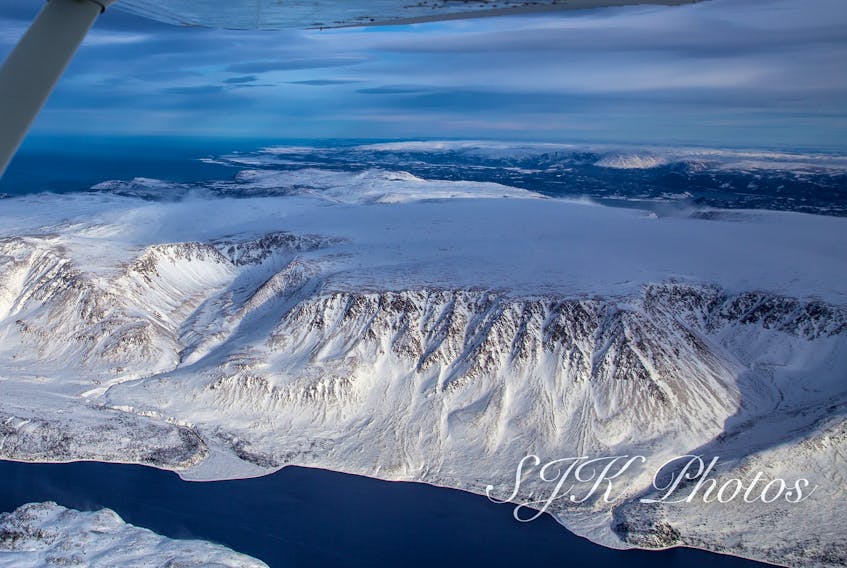Every now and then, Dave Huddlestone sits in his chair, looks out the window and conjures up that comforting, satisfying feeling of a job well done.
He lives in Ottawa now, but that accomplishment Huddlestone occasionally reflects on hearkens back to his time with Parks Canada in Gros Morne National Park.
Having grown up in Alberta and started working seasonally for Parks Canada in Jasper, he took the full-time job available in Rocky Harbour in 1979.
A few years later, as assistant chief park interpreter, he was assigned to help put together an application to the United Nations Organization for Education, Science and Culture (UNESCO) to get the park designated as a World Heritage Site.
The application was a success and this past week marked the 30th anniversary of the designation. Although the official commemoration, including the unveiling of a plaque by Prince Edward, never took pace until June 1988, Gros Morne’s designation as a UNESCO World Heritage Site was actually announced Dec. 11, 1987.
“It felt like somebody had put another feather in my cap, though I certainly wasn’t the only person who was involved,” Huddlestone said in an interview this week.
While he is not sure who first came up with the idea to pursue the designation, Huddlestone said the seed was likely planted back in the late 1960s and early 1970s as Parks Canada worked with the provincial government to set aside the land that would formally become Gros Morne National Park in August 1973.
After the park was established, scientists began taking a closer look at its incredible geological features.
Huddlestone said applying for the UNESCO World Heritage Site status was not someone’s sudden bright idea, but the culmination of a series of revelations and discoveries about the special qualities found within Gros Morne National Park.
“We weren’t the only example of any one thing,” he said. “We were an outstanding example of many things.”
Human activity
The submission also took into account the human history of the area, from what was known about the extinct indigenous cultures who once lived off the land to the 1,000-year-old Norse settlement found not far way in L’Anse aux Meadows, to how it was explored by the famous cartographer Capt. James Cook and the development of the historic fishery in the last 520 years.
Again, it was the broader picture viewed from the historic perspective, and not one single element on its own, that made the case more compelling for World Heritage Site status.
When Huddlestone began working at the park, there was still palpable tension from local residents who were concerned about their ability to harvest the park’s timber and wildlife being limited. There weren’t a lot of tourists around back then and it was hard to understand why such an abundance of resources had to be protected from such a sparse population.
“Academically, I knew what this meant,” Huddlestone said of the designation. “But, practically, socially and politically, I was thinking at some point people would recognize this park is more than campgrounds and highways. I think there was a gradual realization that we had something really special here and what this could mean for the west coast.”
Huddlestone recalled sitting in the Gros Morne National Park’s visitor’s centre when the phone rang and he quickly recognized the voice of the man who was calling and asking for more information about the park.
It was actually former premier Joey Smallwood looking for more information so he could help spread the word about the park’s attractions.
These days, tourism is a major part of the economy of the Gros Morne region and the geology, whether just the scenic beauty of it or the fascinating science behind it, is a big draw.
The best thing, said Huddlestone, is that it took millions of years for the park to become the geological wonder it is and that is not going to change any time soon.
About those rocks
Dave Huddlestone said it was realized those barren, orange-coloured mountains known as The Tablelands were actually the Earth’s mantle — usually hidden well beneath the surface — somehow protruding up through the surface of the ground.
The series of tiered plateaus leading into the Trout River area were discovered to be beaches that were somehow raised up from sea level.
The raised beaches and the fiords that are found in Gros Morne and elsewhere along the western and southern coasts of Newfoundland were all fantastic evidence of glaciation from when massive ice fields scoured the land thousands and thousands of years ago.
It was also learned it wasn’t just the movement of glaciers that had created Gros Morne’s geological expressions, it was also millions of years of plate tectonics at work.
This was clearly evident at places like Green Point, where a person can literally walk across the threshold that divides the Cambrian and Ordovician periods in geological history. Evidence of that event, which happened nearly 500 million years ago, should only be visible deep beneath the ocean.
That evidence of continental drift also helped explain how the breccia that is so evident at places like Cow Head is also not at the bottom of the ocean where the remnants of such ancient landslides would otherwise be expected.
**************
Some of the reasons why UNESCO believes Gros Morne National Park has enough outstanding universal value to warrant World heritage Site status:
- Criterion (vii): Gros Morne National Park, an outstanding wilderness environment of spectacular landlocked, freshwater fjords and glacier-scoured headlands in an ocean setting, is an area of exceptional natural beauty.
- Criterion (viii): The rocks of Gros Morne National Park collectively present an internationally significant illustration of the process of continental drift along the eastern coast of North America and contribute greatly to the body of knowledge and understanding of plate tectonics and the geological evolution of ancient mountain belts. In glacier-scoured highlands and spectacular fjords, glaciation has made visible the park’s many geological features.
Source: UNESCO
*****This article was edited to correct the name of the prince who unveiled the plaque*****









